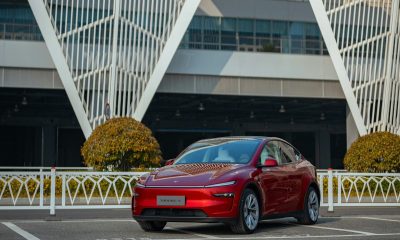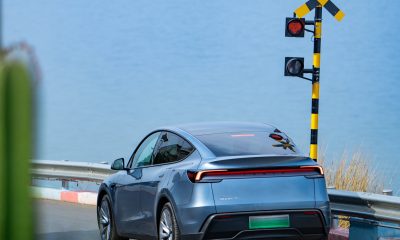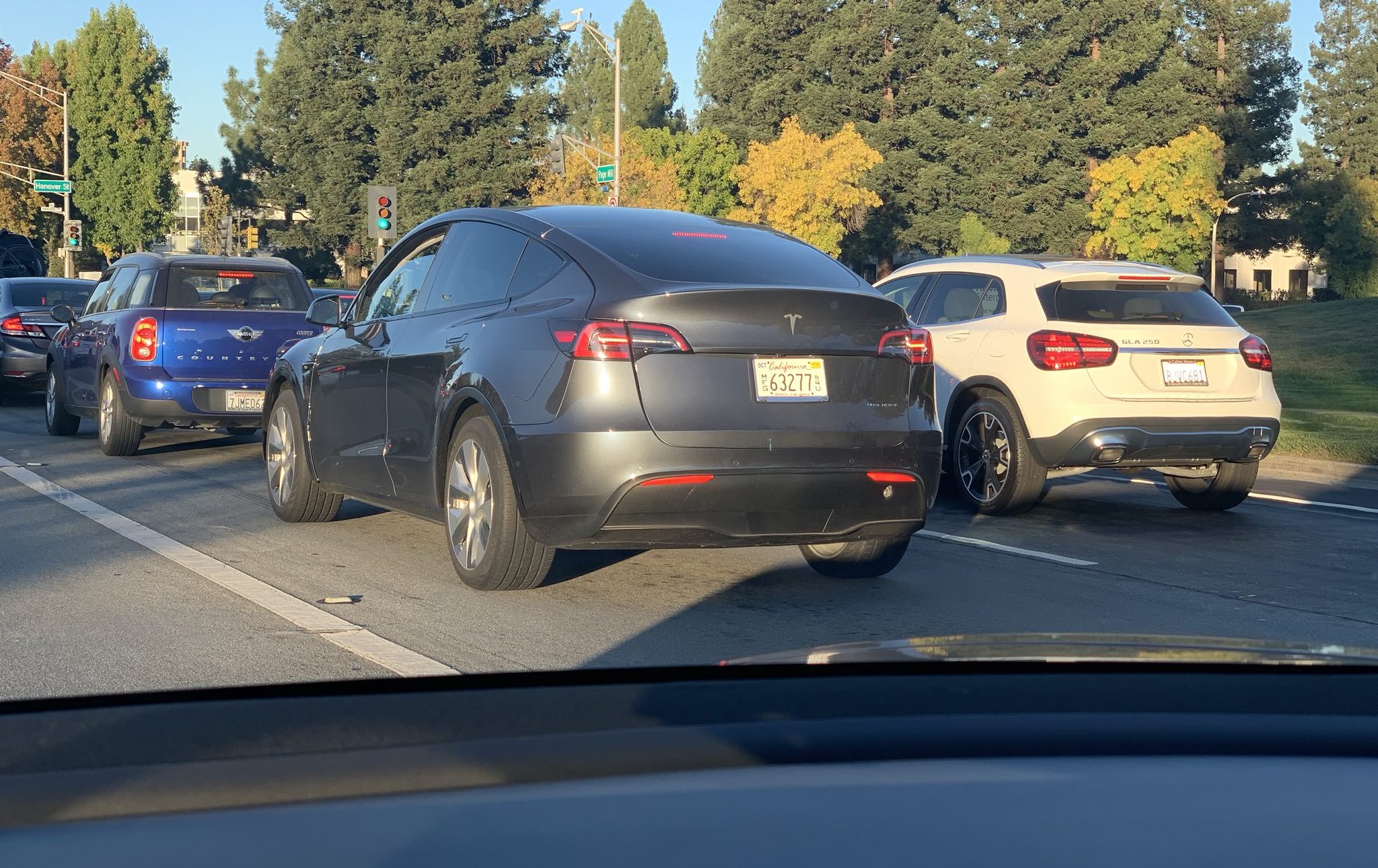

Tesla Model 3
Tesla Model Y: Why it will dominate the crossover EV segment
Tesla’s Model Y will be the company’s first crack at the all-too popular crossover segment. With its first expected deliveries to take place in 2020, one thing is for sure: The most popular electric vehicle brand in the U.S. will hit another home run with the Model Y, and the fact that it is not the first crossover EV on the market will benefit Tesla in the long run.
There is an old saying that states, “The early bird gets the worm, but the second mouse gets the cheese.” In the case of a fully electric crossover vehicle, Tesla is the mouse here, and the fact they are releasing their introductory crossover long after other manufacturers have already released theirs is an advantage for the Silicon Valley-based automaker.
The Jaguar I-Pace, Kia Niro EV, Audi e-Tron, and the Hyundai Kona Electric have all made their way into the American market, giving consumers who want an electric car with the versatility of a crossover the opportunity to own one. But one issue with being the first to release a vehicle with that body style is this: other manufacturers will take the mistakes you made, and improve upon them in their own vehicles. Crossover EVs will continue to evolve into more complex and effective machines, meaning first is not necessarily the best in this case.
But why has Tesla been so successful? There are a few reasons as to how they’ve become the industry standard for electric cars. The first being that they exclusively make vehicles not powered by fossil fuels, an important concept to the prospective buyer who is interested in the sustainability aspect of the industry.
Manufacturers like Audi and Jaguar who are releasing their first cracks at an electric vehicle are making strides, but they’re still primarily focused on creating cars powered by gas. It is hard for someone, especially those who believe wholeheartedly that the future of transportation must be electric, to support a manufacturer whose main focus is on gas-powered machines, even if they are transitioning to producing electric cars. The sales figures of all-electric crossovers like the Audi e-Tron, the Hyundai Kona EV, The Jaguar I-PACE, and the Kia Niro EV, all of whom reportedly did not even breach a thousand units in sales for September, further emphasizes this point.
The Model 3 has become the most popular electric vehicle on the market, selling over 19,000 units in the month of September alone. This figure is around eight times as many as the next closest competitor, according to Forbes. The future of Tesla is slowly navigating away from the Model S and Model X, and the Model 3 and Model Y are where the company will shape its focus.
“To be totally frank, we’re continuing to make [the Model S and Model X) more for sentimental reasons than anything else. They’re really of minor importance to the future,” he said, noting the cost-effectiveness of the 3 and the Y are important, as they are cheaper to produce and more affordable for consumers.
Tesla’s decision to release the Model Y after the Model 3 is all for a good reason. It is obvious the company is already focused on creating a perfect vehicle, and we know Mr. Elon Musk won’t give the loyal Tesla consumer anything short of perfect. With continually improving vehicles due to the company’s ability to utilize Over-the-Air software updates, any issues that may come up will likely be addressed by the automaker and improved upon over time. Among carmakers vying for the lucrative crossover EV segment, after all, few can match Tesla’s drive and dedication to develop the right EV for the right buyers.
News
Tesla upgrades Model 3 and Model Y in China, hikes price for long-range sedan
Tesla’s long-range Model 3 now comes with a higher CLTC-rated range of 753 km (468 miles).
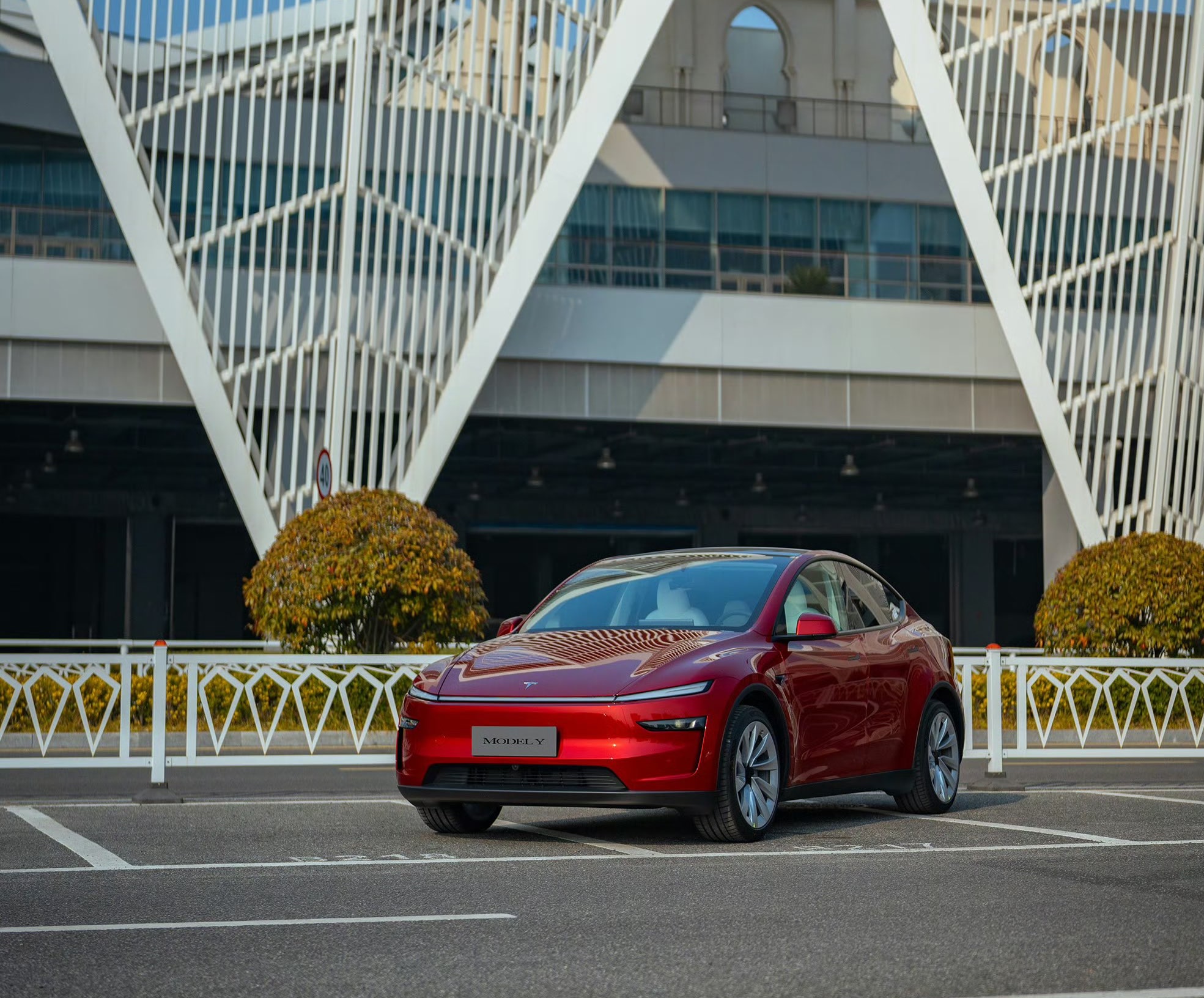
Tesla has rolled out a series of quiet upgrades to its Model 3 and Model Y in China, enhancing range and performance for long-range variants. The updates come with a price hike for the Model 3 Long Range All-Wheel Drive, which now costs RMB 285,500 (about $39,300), up RMB 10,000 ($1,400) from the previous price.
Model 3 gets acceleration boost, extended range
Tesla’s long-range Model 3 now comes with a higher CLTC-rated range of 753 km (468 miles), up from 713 km (443 miles), and a faster 0–100 km/h acceleration time of 3.8 seconds, down from 4.4 seconds. These changes suggest that Tesla has bundled the previously optional Acceleration Boost for the Model 3, once priced at RMB 14,100 ($1,968), as a standard feature.
Delivery wait times for the long-range Model 3 have also been shortened, from 3–5 weeks to just 1–3 weeks, as per CNEV Post. No changes were made to the entry-level RWD or Performance versions, which retain their RMB 235,500 and RMB 339,500 price points, respectively. Wait times for those trims also remain at 1–3 weeks and 8–10 weeks.
Model Y range increases, pricing holds steady
The Model Y Long Range has also seen its CLTC-rated range increase from 719 km (447 miles) to 750 km (466 miles), though its price remains unchanged at RMB 313,500 ($43,759). The model maintains a 0–100 km/h time of 4.3 seconds.
Tesla also updated delivery times for the Model Y lineup. The Long Range variant now shows a wait time of 1–3 weeks, an improvement from the previous 3–5 weeks. The entry-level RWD version maintained its starting price of RMB 263,500, though its delivery window is now shorter at 2–4 weeks.
Tesla continues to offer several purchase incentives in China, including an RMB 8,000 discount for select paint options, an RMB 8,000 insurance subsidy, and five years of interest-free financing for eligible variants.
News
Tesla trails Volkswagen in Q1 EV sales, Model Y still on top

Volkswagen surpassed Tesla in Q1 2025 electric vehicle (EV) sales in Europe.
The German automaker sold 65,679 battery EVs compared to Tesla’s 53,237 in the first three months of the year, per JATO Dynamics data. Volkswagen’s registrations soared 157% year-over-year (yoy), while Tesla saw a 38% decline in the same period, the steepest among the top 30 brands. The German automaker’s strong performance highlights a growing competitive landscape in the EV market.
Despite losing the overall lead, Tesla’s Model Y and Model 3 remain the top two in Europe’s battery EV registrations. Volkswagen’s ID.4 ranked third in EU registrations, trailing the Model 3 by 2,000 units.
Model Y registrations dropped 43% in March, but the Model 3 increased 1% in the first quarter. The decline in Model Y registrations could be linked to Tesla’s upgraded Model Y, which debuted at the beginning of the year. In the first quarter, Tesla retooled and upgraded its factories worldwide to produce the new Model Y.
“As the brand continues to deal with a host of PR issues in addition to the changeover of the Model Y, Tesla is now relying on the Model 3 to offset its losses. Despite the controversy surrounding the brand’s CEO and the limited availability of the new Model Y, Tesla continues to perform well,” said Felipe Munoz, a global analyst at JATO Dynamics.
Tesla addressed its Q1 challenges during its recent earnings calls, with CEO Elon Musk attributing the dip to seasonal and strategic factors.
“Now, Q1, [the] first quarters of a year, are usually pretty tricky. Because it’s usually the worst quarter of the year because people don’t want to go buy a car in the middle of winter during the blizzard. So we picked Q1 as a good quarter to do a cutover to the new version of the Model Y and we changed the production of the world’s best-selling cars with — remember, the Model Y is the best-selling car of any kind on earth with a 1.1 billion unit per year output of a single model,” Musk stated.
Volkswagen’s surge reflects its continued focus on and dedication to EVs. While Tesla’s Model Y remains the global best-seller, Volkswagen’s momentum signals intensifying competition. As both companies navigate market dynamics, Tesla’s focus on its Robotaxi network and upcoming launches will be critical to regaining its edge.
Elon Musk
Tesla Model 3 wins ‘most economical EV to own’ title in new study
The Tesla Model 3 has captured another crown in a recent study showing the most cost-effective EVs
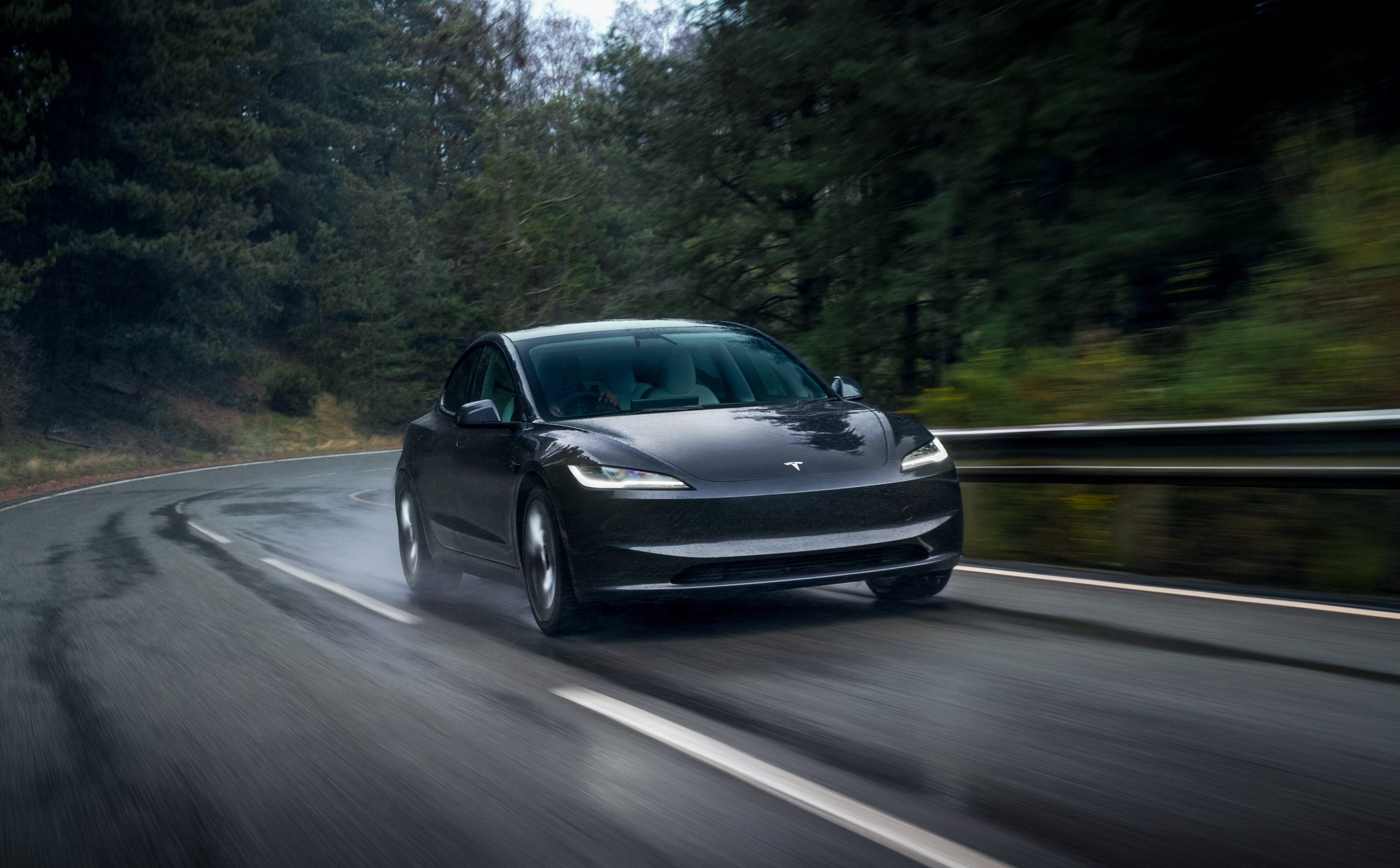
The Tesla Model 3 recently captured the title of “most economical electric vehicle to own” in a new study performed by research firm Zutobi.
Perhaps one of the biggest and most popular reasons people are switching to EVs is the cost savings. Combining home charging, lower maintenance costs, and tax credits has all enabled consumers to consider EVs as a way to save money on their daily drivers. However, there are some EVs that are more efficient and cost-effective than others.
Tesla police fleet saves nearly half a million in upkeep and repair costs
Zutobi‘s new study shows that EV cost-effectiveness comes at different levels. For example, some cars are simply better than others on a cost-per-mile basis. The study used a simple process to determine which EVs are more cost-effective than others by showing how much it would cost to drive 100 miles.
National averages for energy rates have been used to calculate the cost as they widely vary from state to state.
The Rear-Wheel Drive Tesla Model 3 was listed as the most economical vehicle in the study:
“The standard Tesla Model 3 is the most economical electric vehicle to drive in 2025. With a usable battery capacity of 57.5 kWh and a real-world range of 260 miles, it costs just $3.60 to drive 100 miles. That translates to an impressive 2,781 miles per $100 of electricity—making it the most efficient choice for EV owners nationwide.”
It had an estimated cost of just $3.60 to drive 100 miles.
The Tesla Model 3 Long Range All-Wheel Drive was second, the study showed:
“Next is the Long Range version of the Model 3, which offers extended range and dual-motor all-wheel drive. With a larger 75 kWh battery and 325 miles of range, the cost to drive 100 miles is slightly higher at $3.75, still equating to a strong 2,665 miles per $100.”
This version of the Model 3 had a price of just $3.75 to drive 100 miles.
In third, the BMW i4 eDrive35 surprised us with a cost of just $4.12 to drive 100 miles:
“Rounding out the top three is the BMW i4 eDrive35, with a 67.1 kWh battery and a real-world range of 265 miles. Drivers can expect to pay $4.12 per 100 miles, which still allows for 2,429 miles per $100—a solid choice for those seeking luxury and efficiency.”
Several other Teslas made the list as well. The Model 3 Performance ($4.34 per 100 miles) was sixth and tied with the Volkswagen ID.3 Pure, the Tesla Model S Long Range ($4.35 per 100 miles) was 8th, and the Tesla Model Y Long Range was ninth ($4.36 per 100 miles).
-

 Elon Musk1 day ago
Elon Musk1 day agoTesla investors will be shocked by Jim Cramer’s latest assessment
-

 News6 days ago
News6 days agoTesla Robotaxi’s biggest challenge seems to be this one thing
-

 News2 weeks ago
News2 weeks agoTesla’s Grok integration will be more realistic with this cool feature
-

 Elon Musk2 weeks ago
Elon Musk2 weeks agoElon Musk slams Bloomberg’s shocking xAI cash burn claims
-

 News2 weeks ago
News2 weeks agoTesla China roars back with highest vehicle registrations this Q2 so far
-

 News2 weeks ago
News2 weeks agoTexas lawmakers urge Tesla to delay Austin robotaxi launch to September
-

 News2 weeks ago
News2 weeks agoTesla dominates Cars.com’s Made in America Index with clean sweep
-

 Elon Musk1 week ago
Elon Musk1 week agoFirst Look at Tesla’s Robotaxi App: features, design, and more








